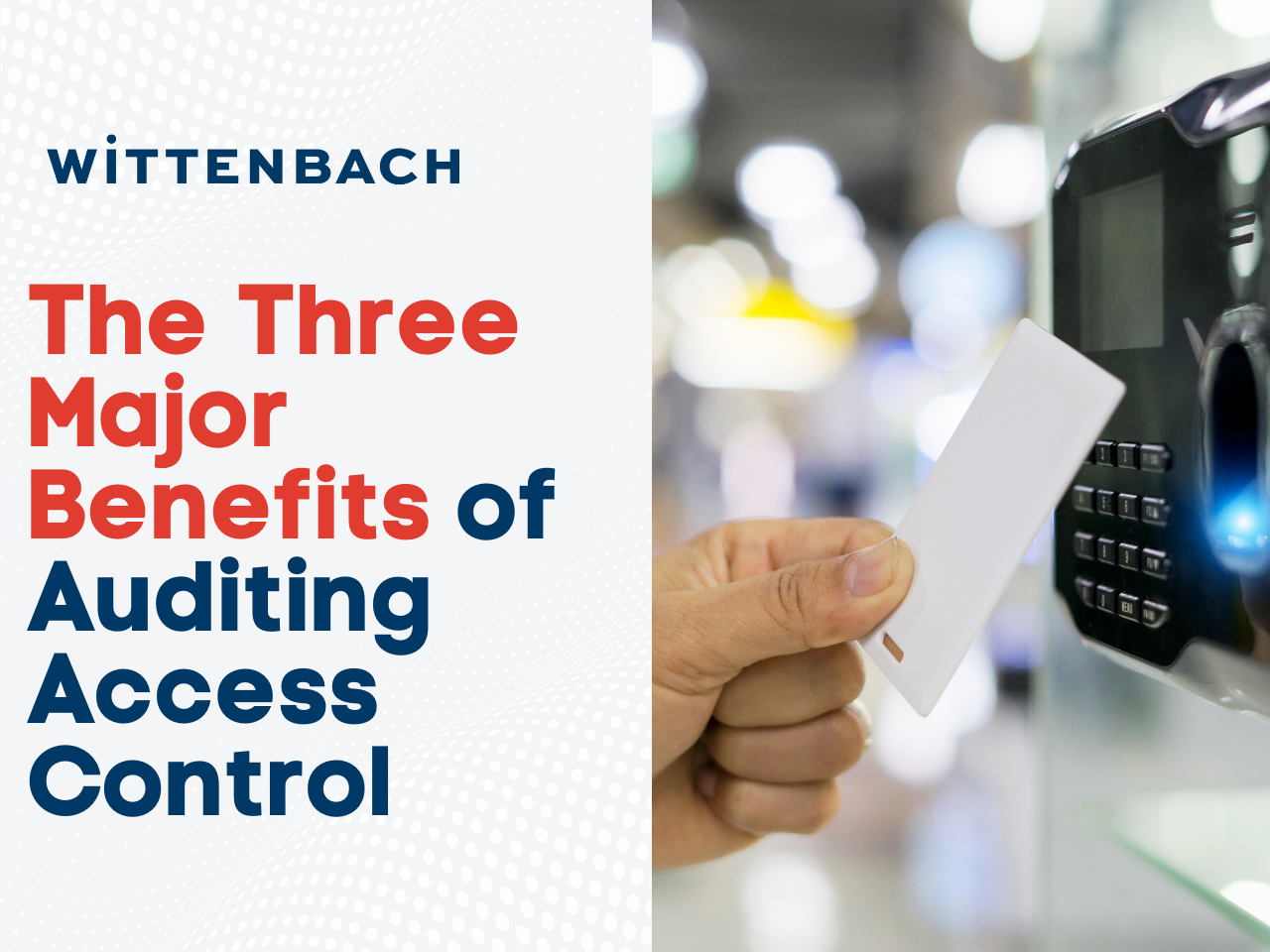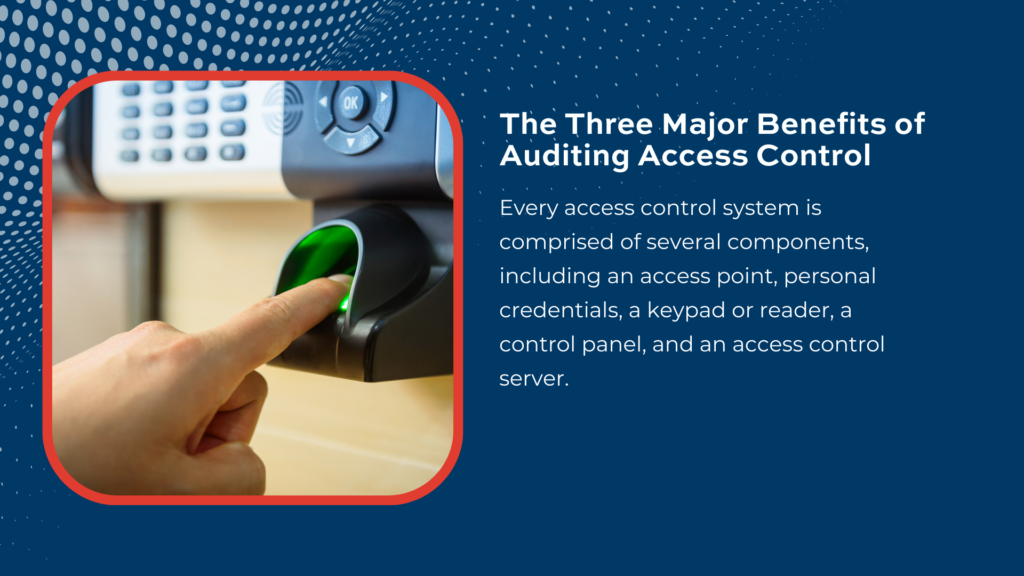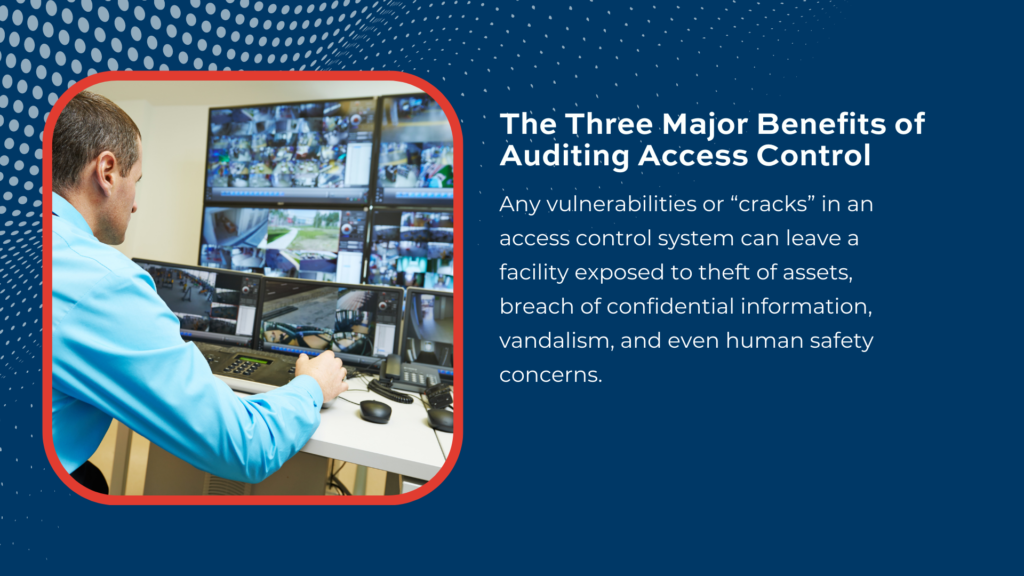The need for user-based access control may vary slightly across industries, geographies, and times of day. However, a common thread unites them: the need to protect valuables, lives, and information around the clock. A frequently-adopted means of providing building security, access control systems allow for entry and exit of building exteriors and inner zones, denying those who do not have the correct credentials.
Wittenbach is an experienced partner to your business throughout the process of choosing, implementing, and maintaining an access control system best suited to your facility. Our carefully-selected manufacturing partners such as Honeywell and DMP lead the electronic security industry and are backed by a history of quality, deep expertise, and a customer-oriented mindset. Below, we will explain the major benefits of auditing the data from your access control system, in order to proactively combat potential vulnerabilities.
What do access control systems do?
Access control systems sit at the intersection of your business’ IT, electronic security, and physical security departments, offering automated building entry and protection. Every access control system is comprised of several components, including an access point, personal credentials, a keypad or reader, a control panel, and an access control server. Together, these tools can protect valuable information and assets in virtually any setting in which security is a priority. Access control is applicable in manufacturing plants, research laboratories, hospitals, government buildings, financial institutions, and even smaller zones of buildings where valuables are housed for safekeeping.
In a recent blog post, we explained the different types of access control, with supporting evidence from BeStructured Technology Group:
- Discretionary Access Control (DAC): One main administrator gives access to specific employees and contractors within their company. This could be certain zones of a branch, certain meeting rooms in an office building, rehearsal or practice spaces in a larger complex, and so on.
- Managed/Mandatory Access Control (MAC): Typically only used in highest-security formats such as government buildings, even administrators do not have the access to change access levels of their teams or subordinates. A MAC is inflexible, but provides the utmost protection.
- Role-based Access Control (RBAC): “In RBAC systems, the owner or system administrator assigns access based on the key holder’s role in the organizations. Everyone has roles and privileges that they are assigned based on their position.”
The three major benefits of auditing access control
Access control systems not only provide a locked or secured entryway, they interpret your credentials via card or key fob to ensure that only those who should have access actually do. Any vulnerabilities or “cracks” in an access control system can leave a facility exposed to theft of assets, breach of confidential information, vandalism, and even human safety concerns. In the most up-to-date systems, all of the entry attempts and data are stored on a central server, from which reports can be derived. These reports can typically be exported into a spreadsheet, where you can model the data to determine trends. These reports can then point to any unexpected behavior, such as numerous off-hours entries that might indicate a risk to your facility. The three major benefits of auditing your access control system include:
- User management: The first benefit of auditing access control is keeping your user list current and accurate. Key cards or fobs should be disabled for separated employees following their departure, and an audit of this list can ensure that nobody “slips through the cracks”. This exercise vastly reduces the risk of a former employee returning and easily swiping into your secure facility when their access should be unauthorized– keeping your information, other staff, and assets protected.
- Optimizing foot traffic flow: If your commercial facility is high-traffic, such as a hospital, manufacturing plant, or government building, you may want to understand which entrances and exits your employees are using each day. If there is a bottleneck to access a building or zone through one singular entry point, you may consider optimizing the space to have alternate entry points so that the flow is easier while your secure zones are still protected.
- Identifying trends: This may be the most obvious benefit, but analyzing data on user access, including permitted and denied access, will help you to identify whether the pattern of access to your facility is expected or unexpected. This loss prevention strategy will help you to recognize, for example, if employees are entering late at night when there is otherwise no activity, or if someone is trying to use a terminated employee’s old credentials and being denied. Protecting your information and assets is critical and this reporting can help you to detect any access patterns that may indicate a threat to that protection.
Recommended access control products
- Provider Honeywell is known as a security giant in many industries, and access control is one area in which they excel. They provide full-suite solutions, as well as the individual components such as control panels, keycard and fob credentials, and readers. All of these products can be scaled to suit a commercial building or campus of any size.
- The DMP Virtual Keypad offers a way to read credentials from a mobile device on virtually any network. This allows anyone with approved access to lock and unlock doors and building zones remotely, without having to be in person to accomplish this. The spec sheet boasts a number of features that allow for ease of use, and reporting is included among them; your team can even generate custom reports beyond what comes standard with their software.
In summary
A solid understanding of the types and nuances of access control systems can allow your company’s security and IT leadership to confidently purchase, implement, and maintain the right system for your business. Part of any access control plan should include auditing system-generated data and reports to ensure risks are well-mitigated and the building space is optimized for human traffic flow. Reach out to Wittenbach with your questions; our experts are standing by to help you optimize your access control and keep your employees and assets safe!



